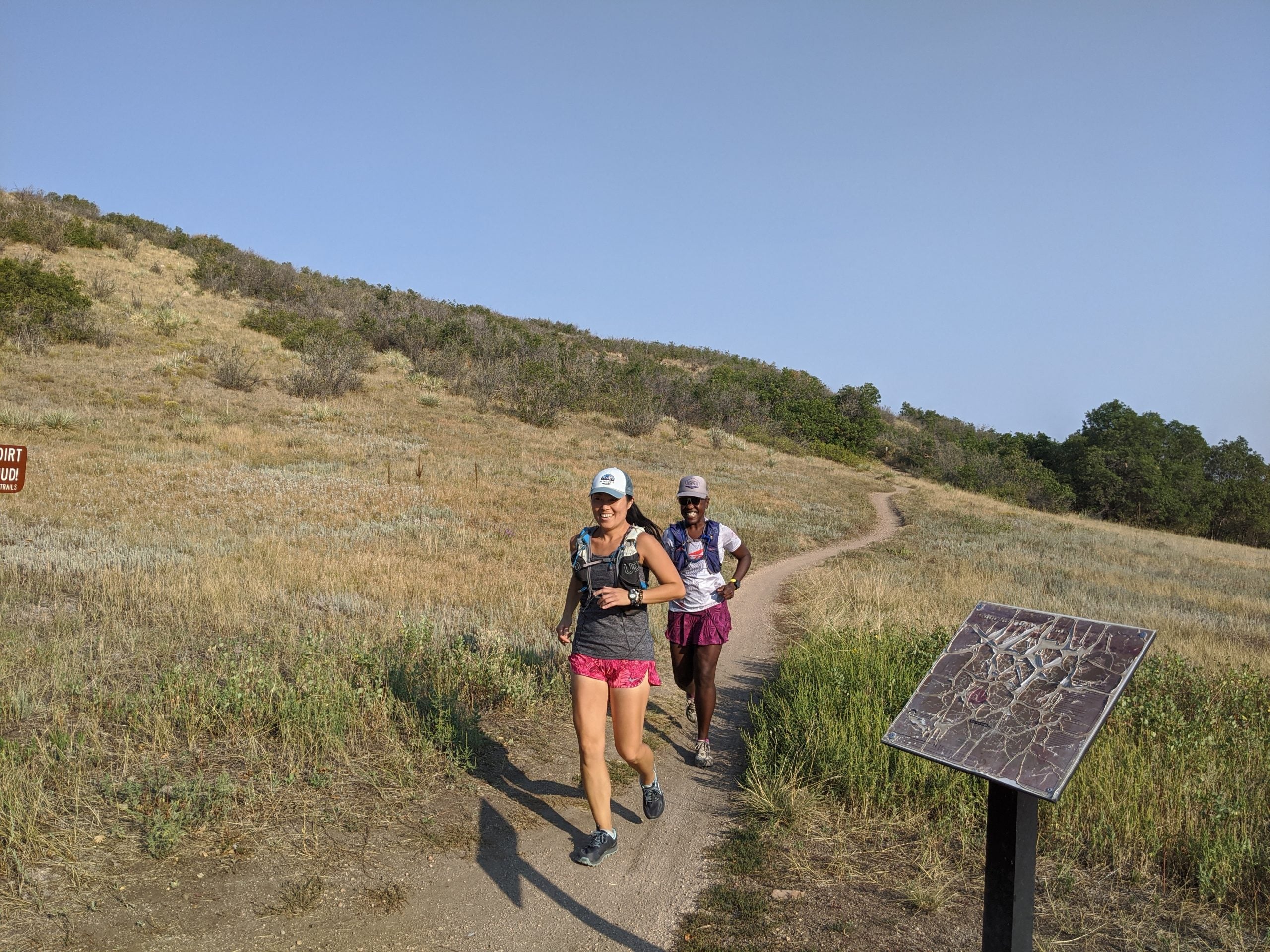Running Starts: Adjusting Expectations

One of the most frequent questions we hear from runners who are new to the trail is, “Why am I so slow?” And the other is, “Will it always be this hard?”
The short version of the answer is, “It depends.”
If you’ve come to trail running after years spent on the roads, it’s tempting to compare your pace and performance on pavement to your trail experience. Not only will those negative comparisons probably leave you feeling a bit flat, but they leave out a lot of the amazing things you’re doing so well.
Not All Miles Are Equal
Whether the roads you’ve been used to are hilly, flat, or gently rolling, pavement will usually be smooth, barring any potholes or the occasional uneven surface. Dirt miles will vary widely depending on where they’re located and how technical they are. If you’re running over and around lots of roots and rocks, loose gravel and debris, the exertion alone will require more energy and focus in order to navigate safely. If you’re running mountain trails, the added element of elevation gain will also require you to let go of old pacing expectations.
Pay Attention
While there are risks to any physical exercise we enjoy, there are specific trail running precautions that might slow you down in the short run, but they can help keep you safe and extend your fun in the outdoors. If you listen to music(or podcasts or audiobooks) on your run, leave at least one earbud behind. Because even if you’re not interested in nature’s song, you will want to be aware of mountain bikes, other runners, hikers and wildlife. Just like defensive driving, being aware of your surroundings may cause you to decrease your speed, but it keeps you present and more responsive to sudden changes on the trail.
Check For Exclusive Use
On pavement, we often have the luxury of designated lanes for pedestrians and pedal pushers, and although park signage and trail literature offer helpful guidelines and etiquette for who’s supposed to yield the right of way, it’s safe to assume not everyone plays by those rules. So, if you show up for a run at a popular multi-use trail at the peak of activity, you might find yourself accommodating more bike traffic than you bargained for. If you prefer not to share trails with bikes or too many people, period, be sure to check the park website or call before you go to determine whether the location offers pedestrian-only trails or alternating days when you can open it up and run interrupted.
Elevation Increases Effort
When I left sea level to move to the mile-high city of Denver, I could hardly believe more people weren’t wheezing and breathless just from walking around town. In the months I spent acclimating to the change and relearning how to enjoy running, I learned that my body was making adjustments to work more efficiently. I’ve since realized that even now, going into increasingly higher altitudes to run and play still requires an additional adjustment. Even though I’ve been trail running for a while, each new adventure requires a few micro-adjustments to my own expectations.
Form Improves Function
Shorten your stride so that your feet stay under you. This prevents over-striding which can cause a loss of balance on uneven or technical terrain, Make sure you’re picking your feet up a little bit more than you might be used to, which helps avoid dragging them over rocks and roots. Focus on controlling your arms swing, keeping them relaxed but close to your body. It will take practice at first, but soon enough, these things will become second nature.
Enjoy The View
Adjusting to trail running takes practice and a fair amount of self-permission to get after it in ways that feel right for you. Letting go of expectations based on what other people are doing, or on what you’ve done in the past will free you up to have a truly unique experience. Embrace power-hiking. Power-hiking – not to be confused with walking or stopping – is an important aspect of the sport, rather than a weakness. It’s also not cheating. Power hiking might slow you down for a stretch, but it will also help sustain your running efforts by aiding in your recovery.
Trail running invites us to absorb the benefit and adventure of being in nature and being adaptable to its constantly changing landscape. It’s a journey of self-discipline and discovery that can teach us volumes when we slow down long enough to learn from it.